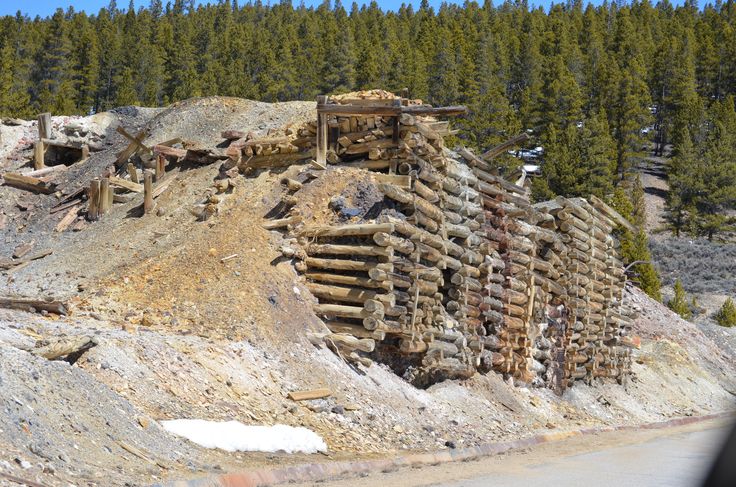Abandoned Gold Mines: Exploring The Toxic Threat To Our Environment

Table of Contents
The Toxic Legacy of Gold Mining
Gold extraction, whether through traditional panning or modern large-scale operations, generates a vast quantity of hazardous waste. The processes involved, from cyanide leaching to mercury amalgamation, leave behind a toxic footprint that endures for generations. Abandoned gold mines are often left unattended, allowing these pollutants to leach into the surrounding environment, contaminating land and water resources.
The types of toxic pollutants commonly found in and around abandoned gold mines include:
- Arsenic: This metalloid is highly toxic, even in small amounts. It contaminates water sources, impacting aquatic life and posing serious health risks to humans through drinking water and food chain contamination. Long-term exposure can lead to various cancers and cardiovascular problems.
- Mercury: Infamous for its neurological damage, mercury is used in traditional gold mining techniques. It bioaccumulates in the food chain, affecting wildlife populations and posing a severe threat to human health, particularly in developing countries where artisanal mining is prevalent. Symptoms of mercury poisoning range from tremors and vision problems to kidney failure and death.
- Cyanide: A highly toxic chemical used in large-scale gold mining to extract gold from ore, cyanide poses an acute threat to all forms of life. Even low concentrations can be lethal to aquatic organisms. Its presence in water sources can lead to devastating environmental consequences, affecting entire ecosystems. Long-term exposure can cause various health issues in humans.
- Heavy Metals (Lead, Cadmium, etc.): These persistent pollutants accumulate in soil and water, entering the food chain and causing a range of health problems, including developmental delays in children and various cancers in adults. Their persistence in the environment makes remediation particularly challenging.
It is estimated that millions of abandoned gold mines exist worldwide, representing a significant and growing environmental hazard. The potential for long-term environmental damage from these sites is immense and demands immediate attention.
Environmental Impacts of Abandoned Gold Mines
The environmental consequences of abandoned gold mines are far-reaching and devastating. These impacts extend across various environmental spheres:
Water Contamination
Mine drainage, particularly acid mine drainage (AMD), is a major source of water pollution. AMD is formed when sulfide minerals in exposed mine tailings react with water and oxygen, producing highly acidic and metal-rich water. This contaminated water severely impacts aquatic ecosystems, killing fish and other organisms. It also contaminates drinking water sources, requiring expensive treatment to make it safe for human consumption. The long-term costs associated with water remediation from abandoned gold mines are substantial, both financially and environmentally.
Soil Degradation
Heavy metals released from abandoned gold mines contaminate the soil, reducing its fertility and impacting plant growth. This loss of soil productivity affects agricultural land and natural ecosystems, diminishing biodiversity and ecosystem services. Soil erosion and landslides are also common problems at abandoned mine sites, further degrading the surrounding landscape.
Air Pollution
The release of dust particles containing heavy metals from abandoned mine tailings can lead to air pollution. Inhaling these dust particles poses significant health risks to local communities, causing respiratory problems and other health issues. This air pollution can significantly affect air quality in surrounding areas, impacting both human health and the environment.
Remediation and Mitigation Strategies
Remediating abandoned gold mine sites is a complex and costly undertaking. However, various strategies exist to mitigate the environmental damage:
- Passive Remediation: This approach utilizes natural processes, such as wetlands and bioremediation (using microorganisms to break down pollutants), to clean up contaminated sites. These methods are generally less expensive but can be slower.
- Active Remediation: This involves more direct intervention, such as excavating and removing contaminated soil, capping mine tailings with impermeable layers, and employing chemical treatments to neutralize pollutants. Active remediation is more expensive and requires specialized expertise.
The challenges associated with mine remediation are significant, including the vast scale of contamination, the complex chemistry of pollutants, and the high costs involved. International cooperation and strong government regulations are crucial to address this global issue effectively. Innovative technologies, such as phytoremediation (using plants to extract pollutants) and advanced oxidation processes, are also being developed to improve remediation efficiency.
The Socioeconomic Impacts of Abandoned Gold Mines
The consequences of abandoned gold mines are not solely environmental; they also carry significant socioeconomic impacts. Local communities often bear the brunt of these effects, facing health problems, economic losses, and displacement due to environmental damage. Resettlement programs are frequently needed, requiring significant investment and careful planning to ensure sustainable development. Community involvement in remediation efforts is crucial, fostering a sense of ownership and promoting long-term environmental protection.
Conclusion: Addressing the Threat of Abandoned Gold Mines
Abandoned gold mines represent a significant environmental and socioeconomic threat. The toxic legacy of irresponsible mining practices continues to impact communities and ecosystems globally. Water contamination, soil degradation, and air pollution are just some of the devastating consequences. Addressing this global issue requires a multi-pronged approach involving active remediation, preventative measures, and strong international cooperation. We must move towards sustainable mining practices, minimizing environmental damage and ensuring that the pursuit of gold does not come at the expense of our planet's health. Learn more about abandoned gold mines and support organizations dedicated to remediation and responsible mining – the future of our environment depends on it. [Link to Organization 1] [Link to Organization 2] Let's work together to prevent the creation of more abandoned gold mines and ensure a healthier future for all.

Featured Posts
-
 Australias Economy Albaneses Chance For Reform Following The Election
May 06, 2025
Australias Economy Albaneses Chance For Reform Following The Election
May 06, 2025 -
 Key Commodity Market Indicators 5 Charts To Watch Closely This Week
May 06, 2025
Key Commodity Market Indicators 5 Charts To Watch Closely This Week
May 06, 2025 -
 Cumhurbaskani Erdogan Ve Aliyev Goeruesmesinin Detaylari
May 06, 2025
Cumhurbaskani Erdogan Ve Aliyev Goeruesmesinin Detaylari
May 06, 2025 -
 Diana Ross Symphonic Celebration 2025 Uk Tour Dates Venues And Ticket Information
May 06, 2025
Diana Ross Symphonic Celebration 2025 Uk Tour Dates Venues And Ticket Information
May 06, 2025 -
 Hrvatska Nagli Porast Uvoza Nafte Iz Azerbajdzana Sumnja Na Ruski Podrijetlo
May 06, 2025
Hrvatska Nagli Porast Uvoza Nafte Iz Azerbajdzana Sumnja Na Ruski Podrijetlo
May 06, 2025
